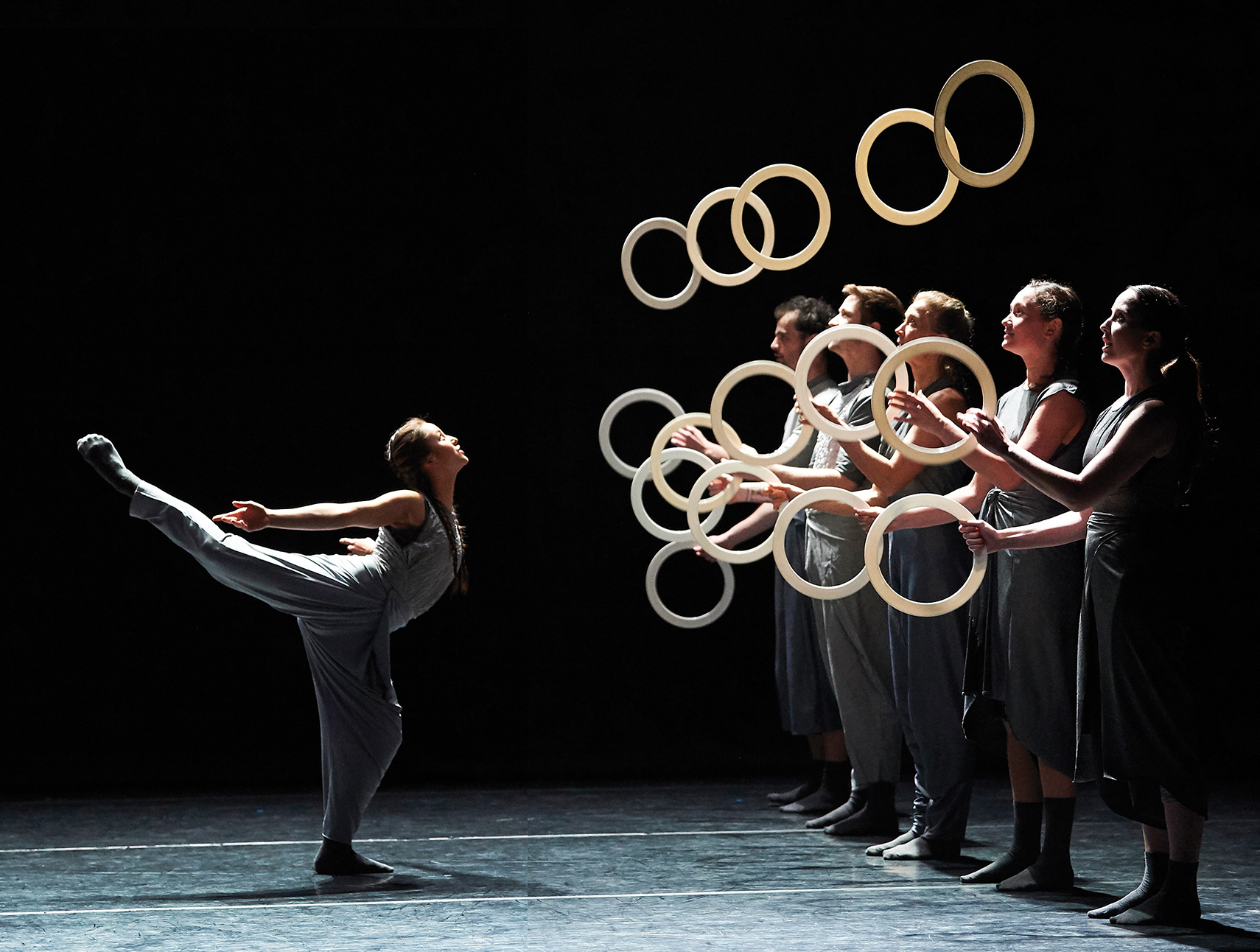London: Summer 2019 - Vancouver Ballet Society
- Home
- City Reports 2015 - 2019
- London: Summer 2019

By Sanjoy Roy
The London International Mime Festival is of tangential yet special interest for dancegoers. Now in its fourth decade, it encompasses a vast range of hybrid performance styles with one common factor: the body is the primary medium.
Gandini Juggling Project graced the festival in 2017 with Smashed, a riotous tribute to Pina Bausch using juggling (yes, really). This year’s Spring at Sadler’s Wells Theatre, a collaboration with choreographer Alexander Whitley, could not have been more different, but it was every bit as delightful. A remarkably seamless fusion of dance with juggling, and dancers with jugglers, Spring was built on movement — balls, rings and batons as well as bodies — and on sound, light and space.
Gabriel Prokofiev’s freewheeling score gusted through the piece like a breeze, and Guy Hoare’s chromatic lighting glinted and shimmered like dappled sunlight. The choreography tugged at the carefulness required by the jugglers, making them tilt and roll even as they kept their objects in flight. And it constantly echoed and offset dextrous skill with reckless swerves, playing fast and loose with counting systems and pass-it-on games. An all-round joy.
The Bausch company itself followed soon after, at the end of February, at the same venue, with a mould-breaking season: the first two full-length works commissioned by the company since Bausch’s death in 2009. If Bausch was known for her particular hybrid of dance and theatre, the new works were hybrids with a different slant.
Greek choreographer Dimitris Papaioannou has a background in visual art, and it showed. Since she began with an homage to Bausch: a pile of foam slabs as a monumental set, before which formed a parade of performers. Women were in gowns, men in suits, yet, unlike with Bausch, we saw them as images, not characters. We didn’t get to know who these people were.
Still, the joining of mechanical means and dreamlike effect — set variously to silence, to distant sounds, to music ranging from J.S. Bach and Sergei Prokofiev to Tom Waits — was often intriguing enough in itself. A woman was held by her hair as her neck nestled in the crotch of a naked man, so that she looked like a severed Medusa head, eyes still blinking. A woman in a ram’s mask had her inky dress smeared to reveal luxurious gold beneath. Another man cast about the stage, cowbells between his legs, poles extending his arms into giraffe-length forelimbs. A woman held a stiff plank for a skirt, beneath which rippled a multitude of legs; she looked part mermaid, part lobster.
The surreal images kept coming, but to what end? Since she was as strange and as matter-of-fact as a child’s game of make believe, as suggestive and arcane as tarot. What it lacked was a sense of pacing — a trajectory, a dynamic — and while its imagery and material were finely crafted, time and character were sketchy.
Bon Voyage, Bob, by Norwegian choreographer and director Alan Lucien Øyen, had a much more cinematic sense of montage. One scene laid out after another within rotating film-set scenography, cued by an emotive but unobtrusive soundtrack to form cameos from human lives. Or, rather, deaths — for the theme of the piece was death and dying, in its many but always final forms.
The piece kicked off with a story about a woman whose brother has died abroad (the source material all came from the performers themselves), and moved through the tragic, the farcical, the fantastic, the melodramatic, the traumatic and, of course, the commonplace. A suicide became a scene of film noir glamour, artfully arranged and rearranged as if by stage technicians attending to a starlet. A dying moment became a quiet bond between a mother and daughter, the rest of the family excluded in another room. A winged angel appeared, a dark horse shadowed a domestic dispute, and one man was dragged away trailing chalk marks on the floor, like the dwindling cardiogram of his life.
Bon Voyage, Bob was stuffed with inventive staging and moving images, but overreached its own means as it approached its end; it began to sermonize. Cut by 30 minutes (it was more than three hours long) and this would be a powerful and pointed work.
On the subject of genre-crossing works, it’s worth mentioning a visit by National Dance Company Wales to the new and much improved Linbury Theatre at the Royal Opera House, with a program that included two startlingly hybrid pieces.
Tundra by Spanish choreographer Marcos Morau managed the improbable feat of joining a retro-Ballets Russes look (folkloric costumes and chants, the plaited limbs of Nijinska’s Les Noces) with a robotic, 1950s sci-fi feel.
Afterimage by Brazilian Fernando Melo mixed projection and reflection both literally (mirrors, video) and psychologically to create resonant if not yet fully realized psychodrama in which ghosts and bodies haunted, hunted and inhabited each other. I’ll be watching out for more.

Five Jugglers and Four Dancers challenge each other and exchange their skills with deconstructed rhythms and jubilant patterning.
